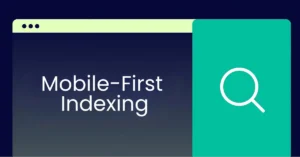Videos rule the internet! Just look at YouTube, with a whopping 2.7 billion users. Instagram Facebook and Snapchat, racking up an incredible 11 billion daily video views each. These numbers keep going up, showing how much online videos content keeps us engaged.
Businesses are catching on, with over 70% using videos for marketing. But here’s the key: marketing videos aren’t just ads. They can be demos, tutorials, and more. Just pick the right type and platform to make your marketing strategy a hit!
Here are top 7 ways to show and tell your brand’s story through video:
1. Target your Audience.
While TV ads still have their role in marketing, they might not connect with as many people as online videos do, especially when it comes to younger audiences. In fact, YouTube and Instagram are estimated to reach more young adults aged 18-34 than any cable TV network. Before diving into a new marketing strategy, it’s crucial to think about where your target audience hangs out online and what kind of content, they’re into.
2. Share and Showcase.
Having an informative video is important, but without engagement, it falls flat. Your video should not only educate but also captivate your audience with a compelling narrative. Seize the potential of video by offering a hands-on demonstration of your product or service. On platforms like YouTube, instructional videos are in high demand, with over 100 million hours viewed in 2022 alone. The foundation of a great video starts with a well-crafted script. To help you craft this content or any other, Amaze Tech’s content writing strategy is just a click away.
3. Shorter is Sweeter.
Even though you can upload over 15 minutes of video on YouTube with their permission, your viewers will have likely tuned out by then. You only have 10 seconds to grab your viewers’ attention, and that attention will wane as your video goes on if you don’t keep them engaged. Every venue has different specifications for video length, as does every type of content. While you should be mindful of this, it is more important to focus on the content of the video, its target audience, and where it will be viewed. For example, a vlog is a longer format than a social media video advertisement. However, your viewer is likely taking the time to watch a vlog that is of interest to them rather than just scrolling past your video ad in their newsfeed on social media.
4. Mobile Friendly.
More people than ever are watching videos on their smartphones. In fact, about half of all online video views happen on mobile devices. To make your videos appealing to these mobile viewers, keep them short and sweet. Mobile devices prefer smaller file sizes for faster loading.
If you’re showcasing videos on your website, it’s crucial to implement responsive design elements. This ensures that your videos adapt smoothly to the screen size of the viewer’s device, delivering a better experience for mobile users.
5. Get Found.
Did you know that YouTube isn’t just a video platform, it’s also the second-largest search engine globally. Surprising, right? Well, it processes a staggering 3 billion searches every month. And just like any search engine, YouTube has its ranking rules. To boost your video’s visibility, pay attention to factors like the title, view count, description, and ratings. Plus, don’t forget the basics of search engine optimization (SEO), including the use of relevant keywords.
6. Be Social.
Social media platforms offer various ways to share videos, each with its unique style. Your choice of platform shapes your video strategy. For instance, Snapchat videos are brief, lasting only 10 seconds, which challenges your message’s brevity. On the other hand, some platforms permit longer videos but might have their own constraints. Twitter, for example, recently changed its rules, allowing videos without consuming characters in Tweets, providing users with all 140 words for their message.
Regardless of the platform, it’s crucial to tailor your content to its specifications to ensure success.
7. Sharing is Caring.
Social media is all about sharing, and that includes videos. Your followers are likely sharing your valuable content, and it’s a good practice to reciprocate. Even if you’ve initially created a video for a different platform or purpose, social media offers a chance to broaden your audience by sharing it with your network.






